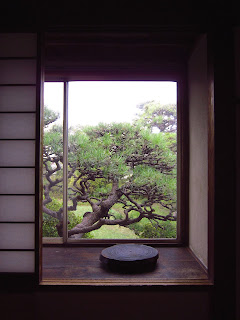Rice is one of the world's most labor intensive foods. I discovered this first hand recently when I took part in a traditional rice harvest.
Rice in Japan is usually harvested in September. Some farmers mow it down at the beginning of the month, some wait until the end. This being the 21st Century most of them use machines for this process. But for some 3,000 years this was not the case. In fact, mechanized rice farming wasn't introduced until the mid 20th Century. One of the reasons for this is heavy machinery is difficult or impossible to move through soft, muddy rice paddies. Also, about 70% of Japan is mountainous, so a lot of rice farming used to be done on steep terraced hillsides which were inaccessible to tractors and other farming equipment.
Koubakai (倖馬会) is a horse stable in Kuta (久多), a small mountain village in northern Kyoto. They also grow rice on a small 150 tsubo (497 m2) plot of land. This is not for commercial purposes. The rice is dedicated to the deities at Kamigamo shrine in an autumn festival called Hono-sai (奉納祭). Each year Koubakai invites people to join in first the planting of the rice in the spring, and then the harvesting of the rice in the autumn.
The day of the harvest I was given a pair of tall rubber boots, gloves and a wicked, razor-toothed sickle called a kama (鎌) in Japanese. After a brief demonstration the 20 or so people stepped into the ta (rice paddy).
Rice paddies are submerged in about 10cm of water for 6 months. They are drained just a day or two before the harvest. This means the soil is incredibly wet and loose, something like over-cooked pudding. Watching people sink into and then try to get out of the muck was a sort of comedy routine straight out of I Love Lucy.
The sickle rips through the rice stalk with ease. This sound is curiously pleasing. The stalks are bundled and then hung panicle-side down on long horizontal racks called hazagi. This method of drying rice slowly in the sunshine is said to produce tastier rice.
This is back-breaking work. But once you find a rhythm it goes quickly. The small paddy with 20 amateur farmers was reaped in about two hours.
As a child I used to visit my uncle's farm in central California. I always enjoyed these rural vacations. As urbanites, it is easy to romanticize farm work. But there is something very satisfying in this labor. Even just a couple of hours harvesting rice. A connection to the land is formed, and ultimately a deeper appreciation of the food that ends up on our table.


































